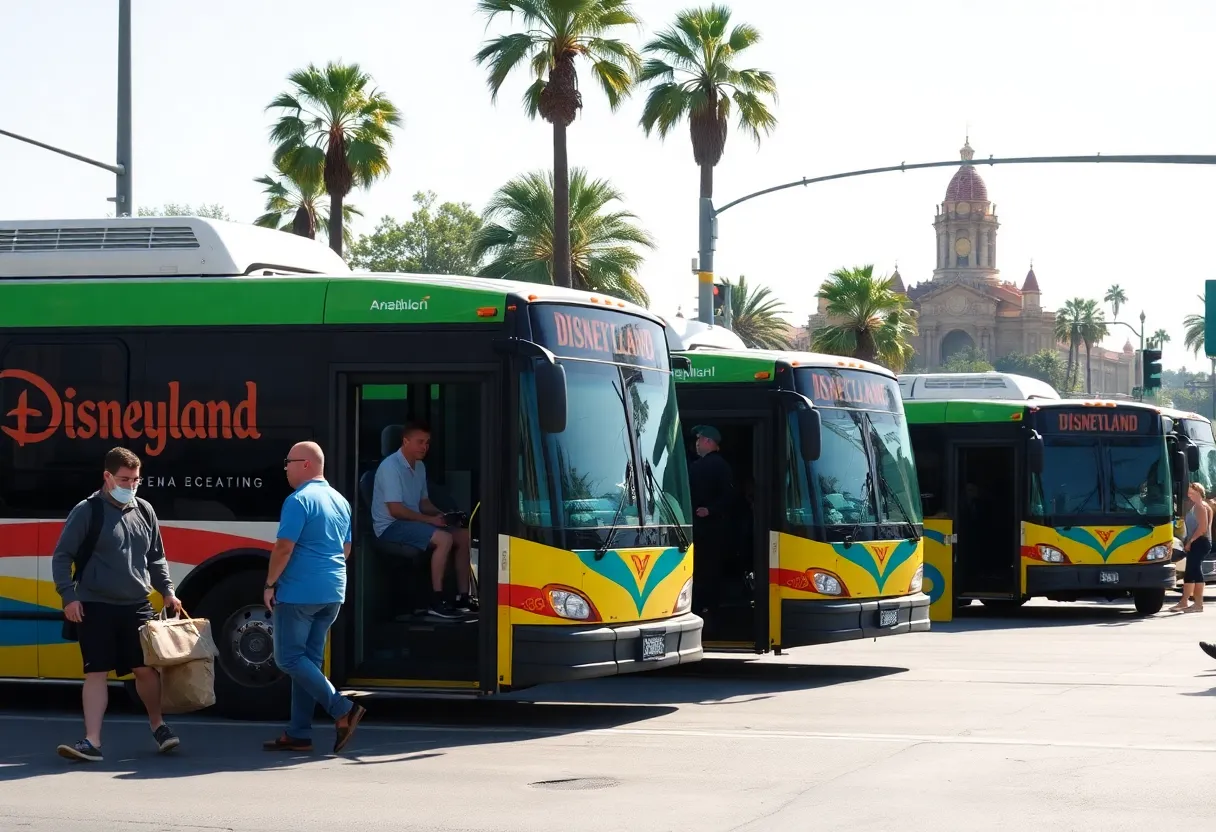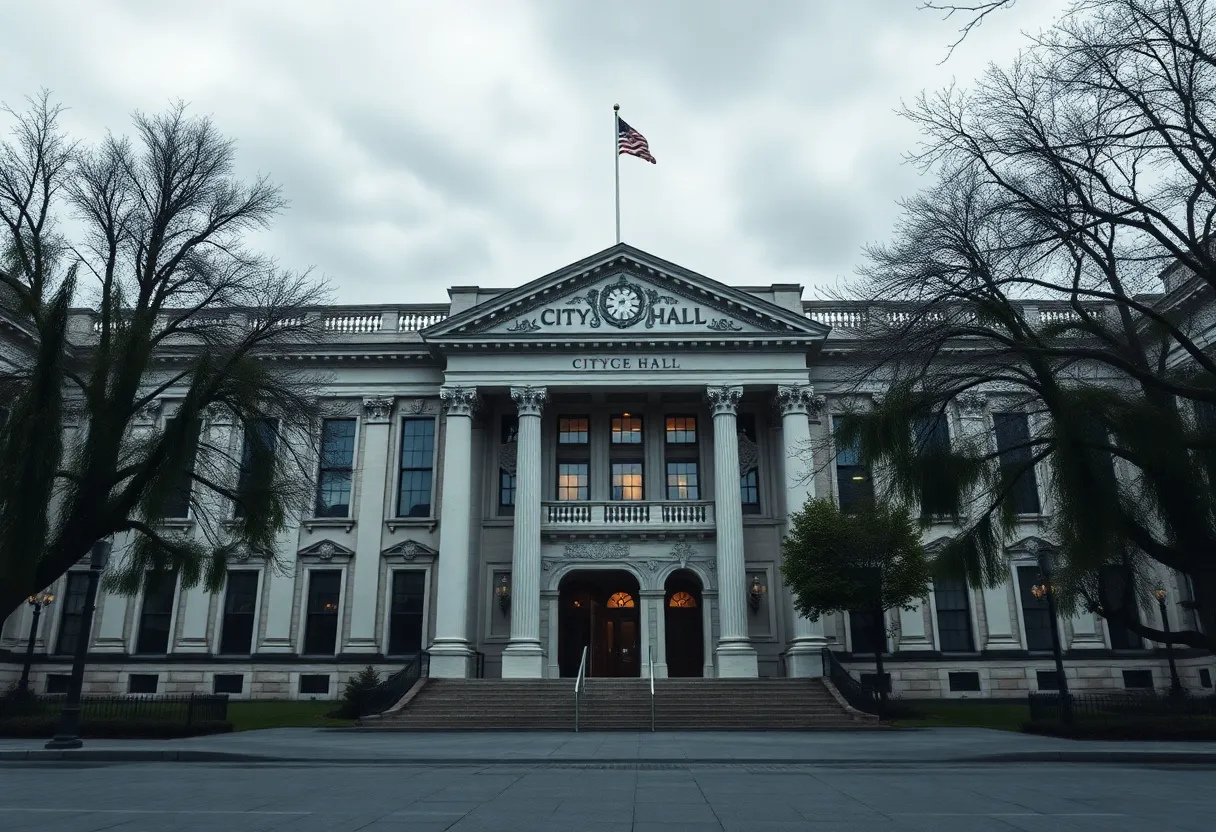News Summary
The Anaheim Transportation Network (ATN) is encountering a severe financial crisis, with expenses projected to exceed revenues by $2.8 million. Despite an interim budget plan, without vital funding from the Anaheim Tourism Improvement District, ATN may face operational disruptions. The city is considering a potential takeover to address the agency’s financial challenges. Ongoing discussions highlight the need for viable funding options to sustain transit services for the Anaheim area.
ANAHEIM – The Anaheim Transportation Network (ATN), which provides vital transit services linking hotels to Disneyland and other attractions, is facing a dire financial situation. The ATN board recently approved a three-month budget plan that relies on obtaining $712,000 from a tourism transportation fund that is not administered by ATN. With labor costs significantly on the rise and limited revenue generation capabilities, the organization has a mere 90 days to rectify its budget shortfalls or risk severe operational disruptions.
The transit agency’s financial woes were laid bare as ATN’s expenses are projected to exceed its revenues by $2.8 million as the new fiscal year begins. ATN CEO Diana Kotler stated that many transit agencies are grappling with similar challenges, describing the current situation as a “fiscal cliff.” While the board considered drastic measures such as layoffs and reducing service by 30%, they ultimately opted for the interim budget plan, which does not include cuts but still faces uncertainty.
Interim chair Matthew Hicks cautioned that without the anticipated funding from the Anaheim Tourism Improvement District (ATID) for transportation, ATN could encounter immediate cash-flow issues within a month. The ATID’s Transportation Committee has yet to approve the necessary funding, and there is no scheduled meeting to address this matter, leaving ATN in a precarious position.
Currently, the transportation fund has around $35 million earmarked for potential projects, including the construction of a pedestrian bridge. ATN generates income through passenger fares, contributions from hotels, and a designated shuttle route servicing Disney, which brings guests from a parking area directly to the theme park. However, the financial landscape has shifted significantly, as ATN’s labor costs have surged by 60% since 2020, with bus operators expected to earn $26 an hour in forthcoming labor contract negotiations. Despite efforts to increase revenue through hotel contributions, the local hotel community is already feeling the strain of elevated taxes for ATN services. Board member Ronald Kim noted that many hotels believe they have reached their maximum capacity for additional fees, raising concerns about their continued participation in the funding arrangement.
In light of these challenges, the city is contemplating a potential takeover of ATN to address its financial shortcomings and improve operational efficiencies. City public works director suggested that any temporary financial assistance would be contingent upon ATN implementing a plan to resolve its structural issues. A city study is currently underway to evaluate whether a city-operated transit agency would be a more sustainable and cost-effective solution for the community.
As the discussions regarding ATN’s future progress through the summer, multiple funding options are being explored to stabilize the organization. Executives from Parking Company of America, which contracts ATN’s bus services, have voiced concerns about delayed payment issues and have encouraged a collaborative approach for establishing a long-term, sustainable path forward. Al Burgess, representing Teamsters 952, indicated that proposals involving layoffs would encounter strong opposition from the union, which underscores the difficulties of navigating the balance between budget cuts and maintaining service levels.
ATN’s operational budget allocation reveals that over 70% of its expenses are tied to employee compensation. Given that a new labor contract must be negotiated soon, expectations for wage increases could further exacerbate the agency’s financial predicament. Meanwhile, fare increases could deter ride usage as ATN competes with popular rideshare services for customer patronage.
As the situation continues to develop, officials and stakeholders remain focused on identifying viable funding options and strategies to secure the financial future of ATN and ensure that it can continue to serve millions of travelers in the Anaheim area.
Deeper Dive: News & Info About This Topic
HERE Resources
Anaheim’s Housing Development Debate: Navigating Growth in the Shadow of Disneyland
Kevin Vance Appointed Head Coach of SDSU Baseball
Procter & Gamble to Cut 7,000 Jobs in Major Restructuring
Runway Reopens Early at Newark Liberty International Airport
Ken Melban Promoted to President of California Avocado Commission
Senate Votes to Revoke California Vehicle Emissions Waivers
California’s Gasoline Car Ban Faces Senate Repeal
Anaheim Considers Aerial Gondola Project to Improve Transit
Senate Considers Blocking California’s Emission Regulations
City of Anaheim Considers Takeover of Transportation Network
Additional Resources
- OC Register: Anaheim Resort Bus Operator Holds Off on Layoffs
- OC Register: Anaheim Looks at Takeover of Resort Transit Operator
- KTLA: Late Night Bus Service for Anaheim Resort Workers
- Mass Transit: Anaheim Transportation Network Opens Solar-Powered EV Charging Hub
- Utility Dive: All-Electric Bus Fleet Anaheim
- Wikipedia: Anaheim
- Google Search: Anaheim Transportation Network
- Google Scholar: Anaheim Transit Challenges
- Encyclopedia Britannica: Anaheim
- Google News: Anaheim Transportation Network

Author: Anaheim Staff Writer
The Anaheim Staff Writer represents the experienced team at HEREAnaheim.com, your go-to source for actionable local news and information in Anaheim, Orange County, and beyond. Specializing in "news you can use," we cover essential topics like product reviews for personal and business needs, local business directories, politics, real estate trends, neighborhood insights, and state news affecting the area—with deep expertise drawn from years of dedicated reporting and strong community input, including local press releases and business updates. We deliver top reporting on high-value events such as major conventions at the Anaheim Convention Center, including NAMM and VidCon, exciting games at Angel Stadium and Honda Center, and developments at Disneyland Resort Our coverage extends to key organizations like the Anaheim Chamber of Commerce and Visit Anaheim, plus leading businesses in hospitality, entertainment, and innovation that power the local economy As part of the broader HERE network, including HERECostaMesa.com, HEREHuntingtonBeach.com, HERESantaAna.com, and HERELosAngeles.com, we provide comprehensive, credible insights into Southern California's dynamic landscape.




